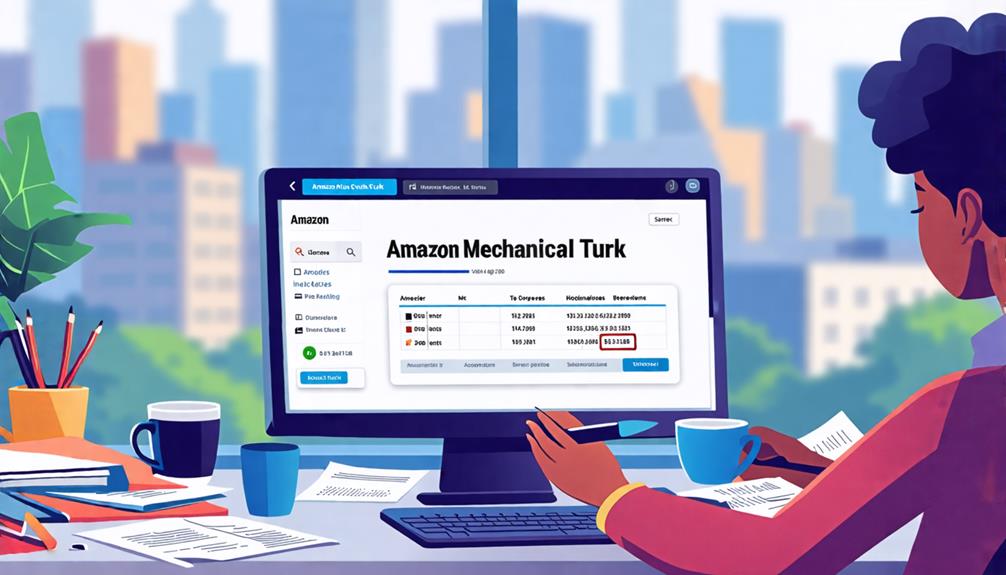Creating Custom Mobile Apps for Local Businesses: How It Works and How to Implement It
Considering a custom mobile app for your local business is a savvy move. Not only can it significantly enhance customer engagement, but it also boosts your brand's visibility within your community. By tailoring the app to meet the specific needs of your local audience, you set yourself apart from larger enterprises.
Here's a step-by-step guide on how this side hustle works and how you can implement it effectively:
- Define Your Mobile App Strategy:
- Identify Key Features: Determine what functionalities will best serve your customers. This could include features like online ordering, appointment booking, loyalty programs, or push notifications for promotions.
- Choose the Right Platform: Decide whether your app will be available on iOS, Android, or both. Consider your audience's preferences and the platforms they use the most.
- Plan the Design and User Experience:
- User-Friendly Interface: Ensure the app is easy to navigate. A clean, intuitive design will keep users engaged and encourage repeat usage.
- Brand Consistency: Incorporate your brand's colors, logo, and overall aesthetic to maintain consistency across all customer touchpoints.
- Development Phase:
- Hire a Developer or Use App-Building Tools: Depending on your budget and technical expertise, you can either hire a professional developer or use DIY app-building platforms like Appy Pie or BuildFire.
- Prototype and Test: Before full-scale development, create a prototype and gather feedback. This helps in refining the app to better meet user expectations.
- Launch and Promote Your App:
- Soft Launch: Initially release the app to a small group of users. Use their feedback to make necessary adjustments.
- Marketing Campaign: Promote your app through social media, email newsletters, and in-store signage. Highlight the benefits and unique features to encourage downloads.
- Monitor and Update:
- Track Performance: Use analytics tools to monitor user engagement and app performance.
- Regular Updates: Continuously improve your app based on user feedback and technological advancements. Regular updates keep your app relevant and functional.
By following these steps, you can successfully implement a custom mobile app for your local business, driving customer engagement and elevating your brand presence in the community.
Defining Your Mobile App Strategy
Defining Your Mobile App Strategy for a Side Hustle
To lay the groundwork for a successful mobile app as a side hustle, you need to define a clear strategy that aligns with your personal goals and targets a specific audience.
Your target audience is the key to unlocking the full potential of your app, as they'll be the ones using it. To understand their needs, preferences, and behaviors, you must conduct thorough market research. This involves gathering data through surveys, focus groups, and online analytics tools.
By analyzing this data, you'll gain valuable insights into your target audience's demographics, interests, and pain points. This information will help you create an app that meets their unique needs and provides a valuable user experience.
With your target audience in mind, you can now define your app's purpose, goals, and key performance indicators (KPIs). This will guarantee that your app stays focused on meeting the needs of your users and achieving your side hustle objectives.
Choosing the Right Development Platform
When developing a custom mobile app for your side hustle, selecting the right development platform is a critical decision that influences the app's scalability, maintainability, and overall success.
You're faced with two primary options: native vs hybrid platforms. Native platforms, such as iOS and Android, use platform-specific programming languages like Java or Swift, providing low-level access to device features and peak performance.
Hybrid platforms, on the other hand, include frameworks like React Native, Flutter, or Xamarin that allow you to build multiple platform apps from a single codebase using web languages like JavaScript, HTML/CSS, and frameworks-specific languages.
The main criteria for choosing the right development platform is scalability. What kind of load and stresses do you anticipate for the app? Platform scalability matters.
If the app only needs to run on several devices, for example, like a scheduling app designed for managing your side hustle clients, performance mightn't be the overarching concern.
Consider these native and hybrid choices when trying to determine how you decide on your right development fit.
Designing a User-Friendly Interface
Designing an intuitive interface is crucial for your custom mobile app, as a well-crafted user experience directly impacts how effectively your side hustle clients can interact with your app's features.
To achieve this, you'll need to carefully consider the visual elements and layout of your app. This includes selecting a color scheme that aligns with your side hustle brand and is visually appealing. You'll also want to ensure that the typography is clear and readable on various screen sizes.
In addition to the visual aspects, you'll need to plan the navigation flow of your app. This involves mapping out the user's journey and ensuring that each feature is easily accessible. A well-designed navigation flow will enable users to seamlessly move between features, reducing frustration and increasing engagement.
To optimize the user experience, consider conducting user testing and gathering feedback to identify areas for improvement. By prioritizing a user-friendly interface, you can create an app that effectively meets the needs of your side hustle clients and their customers.
Building a Loyal Customer Base
Building a Loyal Customer Base
Your custom mobile app's ability to build a loyal customer base for your side hustle hinges on its capacity to consistently deliver value, provide personalized experiences, and foster meaningful connections with your target audience.
To achieve this, you'll need to implement effective customer engagement strategies that encourage users to interact with your app regularly.
One way to do this is by integrating loyalty programs that reward users for repeat purchases or other desired behaviors related to your side hustle.
Integrating E-commerce and Payment Gateways
To monetize your side hustle effectively through a custom mobile app, integrating e-commerce functionality and secure payment gateways is crucial. This enables seamless transactions and a convenient user experience, making it easier for customers to support your business.
Evaluate various payment processing options, such as credit card payments, PayPal, or mobile wallets like Apple Pay or Google Pay. When choosing a payment gateway, ensure it's compatible with your app's platform and complies with industry standards for security and data protection.
To create a comprehensive e-commerce experience for your side hustle, incorporate essential features like product catalog management, shopping cart functionality, and order tracking. Your app should also handle promotions, discounts, and loyalty programs to incentivize repeat business.
Measuring App Performance and Analytics
As you launch your custom mobile app as part of your side hustle, it's crucial to establish clear key performance indicators (KPIs) to measure its success.
You'll need to identify and track relevant mobile app metrics, such as user engagement, retention rates, and conversion rates, to understand your app's strengths and weaknesses.
Key Performance Indicators
Measuring the success of a custom mobile app for your side hustle requires defining and tracking key performance indicators (KPIs) that provide actionable insights into user behavior, engagement, and conversion rates. As you develop your app, you'll want to focus on KPIs that matter most to your specific side hustle, such as customer engagement and sales growth.
By tracking these metrics, you'll gain a deeper understanding of how users interact with your app, identifying areas of improvement to increase engagement and drive revenue. You'll want to track metrics like session length, bounce rate, and retention rate to evaluate user satisfaction. Additionally, monitoring metrics such as click-through rates and in-app purchase conversion rates will help you optimize your app's UI/UX to boost conversion rates.
When selecting KPIs, prioritize those that align with your side hustle objectives, ensuring that the insights gathered inform data-driven decisions. Effective KPI tracking allows you to iteratively refine your app, fostering improved customer engagement, and increasing the likelihood of converting users into loyal customers.
Regularly reviewing these metrics enables you to measure your app's performance accurately and fine-tune its overall user experience.
Mobile App Metrics
By establishing a set of relevant mobile app metrics for your side hustle, you can build on the insights gained from tracking key performance indicators (KPIs) and develop a thorough understanding of your app's performance and user behavior. This will allow you to identify areas that need improvement, optimize your app's functionality, and ultimately drive business growth.
Focus on metrics that measure user engagement, such as time spent on the app, pages viewed, and features used. User retention is also vital, so track metrics like daily and monthly active users, as well as the percentage of users who return to your app after a certain period.
Additionally, monitor metrics that provide insights into user behavior, such as in-app purchases, click-through rates, and social media sharing. By analyzing these metrics, you'll be able to refine your app's user experience, enhance its features, and develop targeted marketing strategies to increase user engagement and retention.
Regularly reviewing and adjusting your mobile app metrics will ensure your side hustle remains competitive and aligned with your business objectives, ultimately driving long-term success.
Conclusion
As you plant the seeds of a custom mobile app for your side hustle, nurture it with a clear strategy, and prune it with user-friendly design and seamless e-commerce integration, your venture will reap the harvest of a loyal customer base and operational efficiency.
Just as a sturdy tree stands tall amidst competition, a well-designed app empowers your side hustle to compete with larger enterprises. Its roots of user engagement and market reach grow deeper with each passing day.
















































0
View comments